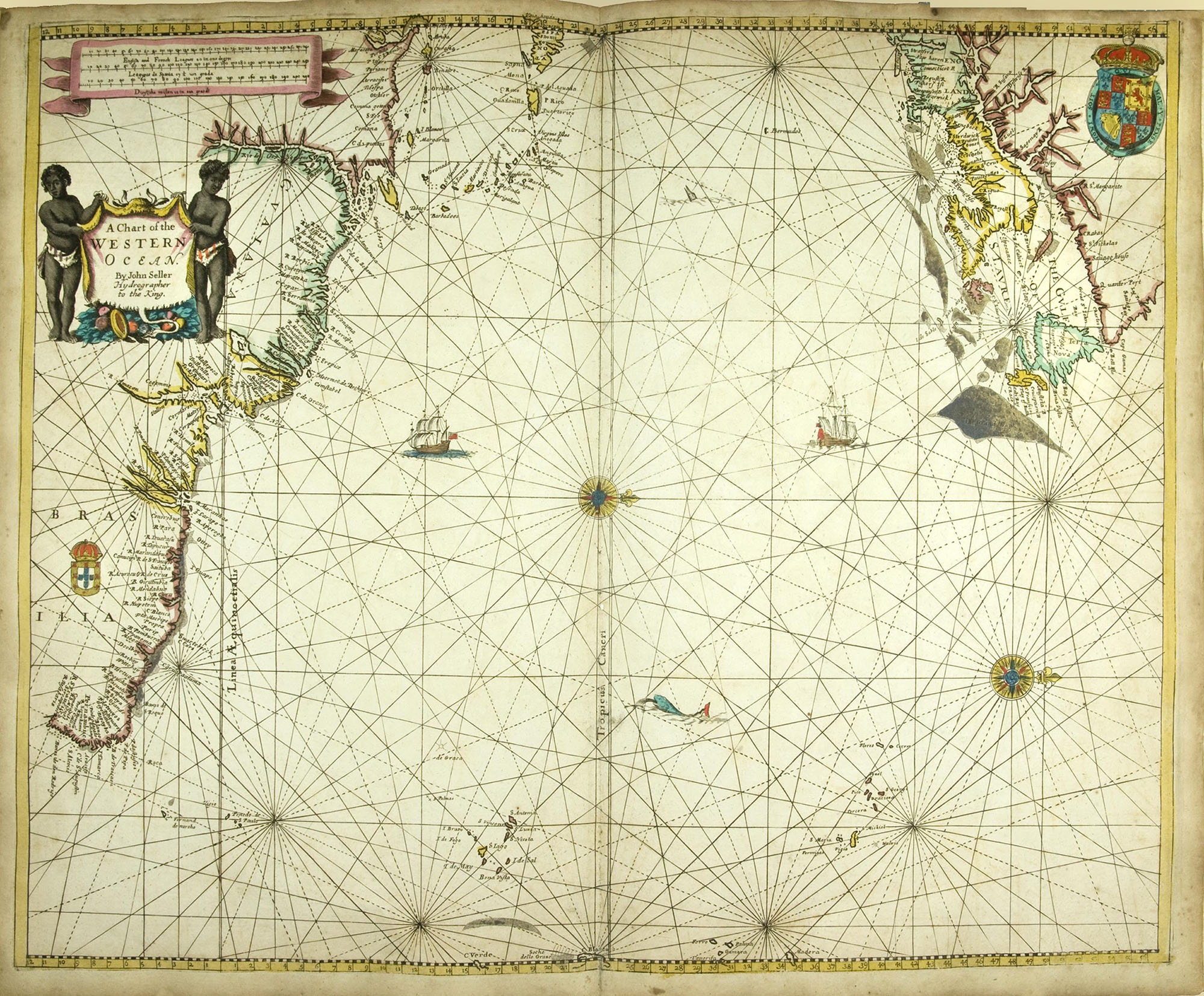
Map that shows the coast of Brazil in South America. Catalogue Ref: FO 925/4111 f.29.
From the sixteenth century there were plantations in Brazil that were growing sugar, which was then transported by ship to European ports.
Transcript
A chart of the
WESTERN OCEAN
By John Seller
Hydrographer to the King
Map description
A map showing a large ocean with two land masses on either side. The bottom half of the land mass on the left is labelled ‘BRASILIA’ and the top half is labelled ‘GUAIANA’. The land mass to the right is labelled ‘THE GULF OF ST LAURENCE’. Smaller islands in the ocean are also depicted. Numerous cities across the land masses are labelled. Each land mass is outlined in either pink, yellow, or blue.
Across the map are dozens of criss-crossing lines that cross from different points on the map spread throughout the ocean and land masses.
In the top left corner, two dark-skinned people wearing loin cloths are holding the title of the map.
Large wooden ships are illustrated on the ocean, as well as a large fish-like creature and a dolphin-like creature.
- Can you describe what you see in the map?
- Can you spot the cities of Pernambuco and Baya, the sites of large sugar plantations?
- Notice the two people holding up the map sign: ‘A Chart of the Western Ocean’. What might this tell us about who was enslaved on sugar plantations?
- Can the pictures tell us about what other foodstuffs could grow in Brazil?
- Are objects on this map drawn to scale? [Clue: Do they show their real size]
- What does this tell us about map making in the early modern period?
- Why do you think this map has been coloured in?
- There are many criss-crossing lines on this map. What do you think these might be used for?
- What can the map’s illustrations tell us about how sugar was transported overseas?
- What can a map show us which a written document might not?
- Why do you think this map is important for learning about where sugar was grown?
